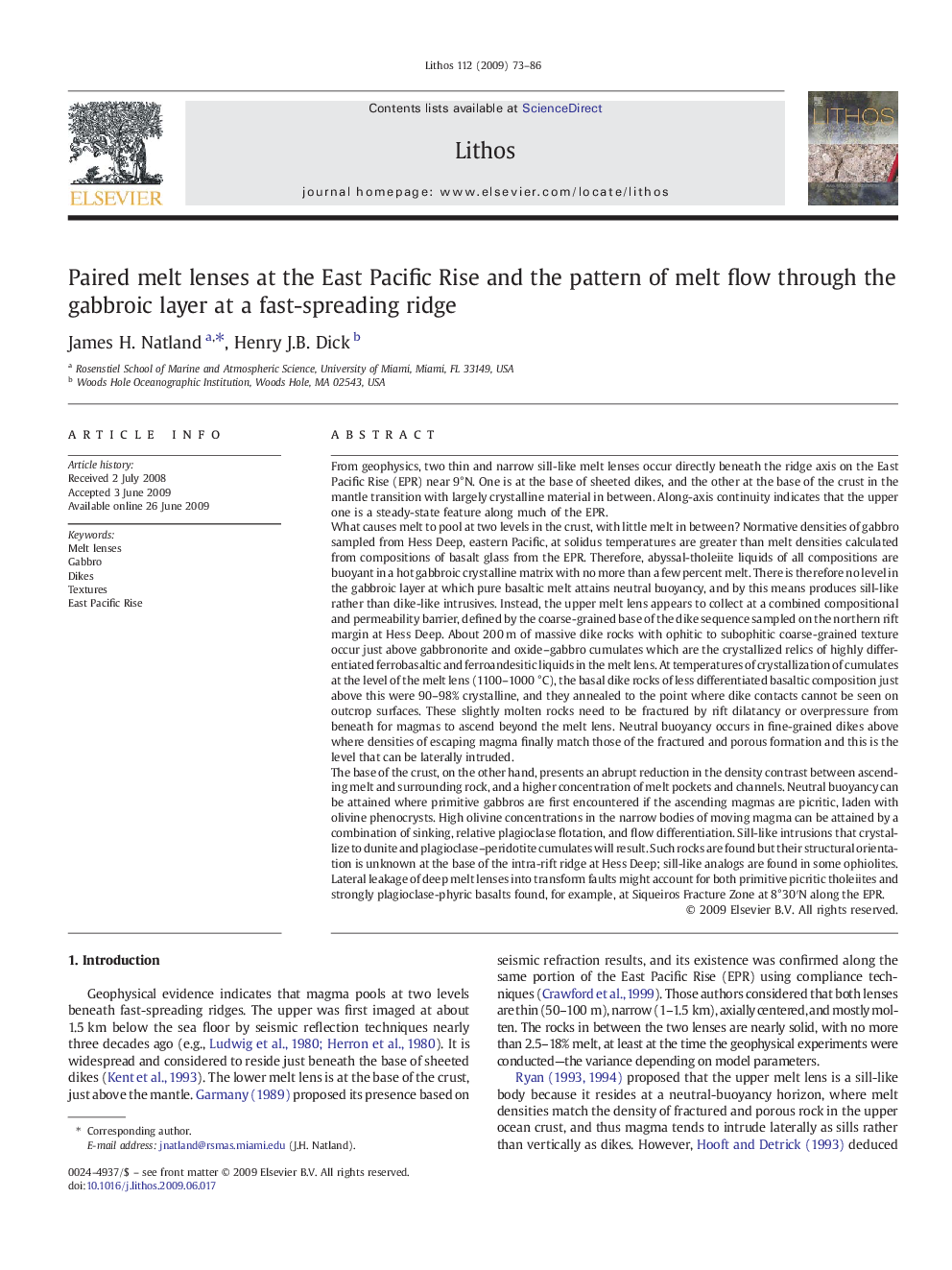| کد مقاله | کد نشریه | سال انتشار | مقاله انگلیسی | نسخه تمام متن |
|---|---|---|---|---|
| 4717131 | 1638741 | 2009 | 14 صفحه PDF | دانلود رایگان |

From geophysics, two thin and narrow sill-like melt lenses occur directly beneath the ridge axis on the East Pacific Rise (EPR) near 9°N. One is at the base of sheeted dikes, and the other at the base of the crust in the mantle transition with largely crystalline material in between. Along-axis continuity indicates that the upper one is a steady-state feature along much of the EPR.What causes melt to pool at two levels in the crust, with little melt in between? Normative densities of gabbro sampled from Hess Deep, eastern Pacific, at solidus temperatures are greater than melt densities calculated from compositions of basalt glass from the EPR. Therefore, abyssal-tholeiite liquids of all compositions are buoyant in a hot gabbroic crystalline matrix with no more than a few percent melt. There is therefore no level in the gabbroic layer at which pure basaltic melt attains neutral buoyancy, and by this means produces sill-like rather than dike-like intrusives. Instead, the upper melt lens appears to collect at a combined compositional and permeability barrier, defined by the coarse-grained base of the dike sequence sampled on the northern rift margin at Hess Deep. About 200 m of massive dike rocks with ophitic to subophitic coarse-grained texture occur just above gabbronorite and oxide–gabbro cumulates which are the crystallized relics of highly differentiated ferrobasaltic and ferroandesitic liquids in the melt lens. At temperatures of crystallization of cumulates at the level of the melt lens (1100–1000 °C), the basal dike rocks of less differentiated basaltic composition just above this were 90–98% crystalline, and they annealed to the point where dike contacts cannot be seen on outcrop surfaces. These slightly molten rocks need to be fractured by rift dilatancy or overpressure from beneath for magmas to ascend beyond the melt lens. Neutral buoyancy occurs in fine-grained dikes above where densities of escaping magma finally match those of the fractured and porous formation and this is the level that can be laterally intruded.The base of the crust, on the other hand, presents an abrupt reduction in the density contrast between ascending melt and surrounding rock, and a higher concentration of melt pockets and channels. Neutral buoyancy can be attained where primitive gabbros are first encountered if the ascending magmas are picritic, laden with olivine phenocrysts. High olivine concentrations in the narrow bodies of moving magma can be attained by a combination of sinking, relative plagioclase flotation, and flow differentiation. Sill-like intrusions that crystallize to dunite and plagioclase–peridotite cumulates will result. Such rocks are found but their structural orientation is unknown at the base of the intra-rift ridge at Hess Deep; sill-like analogs are found in some ophiolites. Lateral leakage of deep melt lenses into transform faults might account for both primitive picritic tholeiites and strongly plagioclase-phyric basalts found, for example, at Siqueiros Fracture Zone at 8°30′N along the EPR.
Journal: Lithos - Volume 112, Issues 1–2, September 2009, Pages 73–86